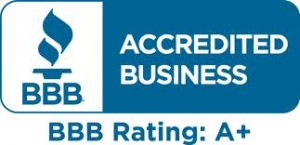Is your vehicle safety registration expiring soon? You may not pass your safety check inspection if you have a chip, nick or crack on your windshield. Non-operating driver side windows can also be a problem if not operating properly. Repairing these items before you go can save you the trouble of failing your safety inspection. Visit your neighborhood Ace Auto Glass to repair many of these glass problems. From front windshields, side windows, to side mirrors, your friendly customer service representatives can help you find the right part for your vehicle and set up an appointment for you. Our certified glass technicians will bring your vehicle’s glass up to the proper safety standard required to pass your inspection.
What are the Hawaii safety check inspectors looking for when it comes to auto glass?
When it comes to vehicle glass, the safety check inspectors are looking for specific items*. Ace Auto Glass has assembled the following list for inspected items as they relate to vehicle glass from the Periodic Motor Vehicle Inspection Manual for Inspectors of Passenger Cars and Light Trucks, Department of Transportation, State of Hawaii, December 2017. To read the complete manual, please click here HAR19-133.2-PMVI-Manual-for-Inspectors-of-Passenger-Cars-and-Light-Trucks-12-26-2017. (Covid FAQs)
*In the case of Reconstructed Vehicles or Neighborhood Electric Vehicles refer to the complete manual.
Glazing Materials on Automotive Glass
Glazing materials protect occupants from weather and flying objects. The windshield protects against occupant ejection in a frontal crash. Unlike the windshield, the side windows are designed to shatter into small cubical pieces upon impact. In passenger cars all windows are requisite for driving visibility, but in vehicles built on a truck chassis (MPVs, trucks, buses) the windows behind the driver are not requisite for driving. Glazing materials must have a mark indicating that they comply with FMVSS 205. No glazing material requisite for driving visibility can be replaced with an opaque substance. (Note: Ace Auto Glass does not install tinting materials).
You will fail your inspection if:
- A vehicle built on a car, truck or bus chassis has no windshield. If any of the other glazing material is missing and the absence leaves no dangerously sharp edges, the glazing can be passed.
- There are cracks, discolorations, chips, or scratches in the windshield or windows requisite for driving visibility that significantly interfere with driving visibility.
- Non-transparent (opaque) materials are used in place of glazing that is requisite for driving visibility.
- The window adjacent to the driver cannot be lowered to the down position. This assures that the driver will be able to use hand signals in the event that the electric signals fail. If the glass is missing or cannot be raised from the lowered position, the glazing can be passed.
- The glazing has a decal or sticker that does not comply with County Ordinance. Honolulu’s reads as follows:
Sec. 15-19.30 Windshields to be unobstructed (a) No person shall drive any motor vehicle with any sign, poster or other nontransparent material upon the front windshield, side wings, or side or rear windows of such vehicle which obstructs the driver’s clear view of the highway or any intersecting highway.
(b) Except as otherwise provided in Section 15-15.5, posters or stickers approved by the chief of police shall be placed at the lower right-hand corner of the front windshield of a left-hand driver motor vehicle or at the lower left-hand corner of the front windshield of a right-hand driven motor vehicle, or in a location as approved by the chief of police. However, such posters or stickers so placed shall not cover an area greater than four inches by six inches, except for non-residence permits or for military requirements, in which case an additional area four and one-half inches by six inches may be used.
(c) No person shall drive any motor vehicle with any nontransparent material r object suspended upon the hood of radiator of which is attached any fixture ornament of nay material which vibrates, swings or flutters within the view of the driver of such vehicle.
- A rear window with aftermarket tinting on 2013 model year vehicles and later must not have tint over the operation through which the high mounted stop light shines. If that portion is tinted, it is considered an obstruction and the vehicle must be failed.
Mirrors
Honolulu County Ordinance 15-19.29 requires one or more mirrors so located as to reflect to the driver a view of the highway for a distance of at least 200 feet to the rear. Motor vehicle manufacturers typically install three mirrors so traffic can be seen to the rear on each side of the vehicle as well as behind it. Having two outside mirrors allow good rear vision even when a vehicle is full of occupants or cargo that blocks vision through the inside mirror. If a car was certified by its manufacturer to be in compliance with FMVSS with two or three mirrors the vehicle must have two to three mirrors to pass inspection, because the inspection rules are designed to preserve any safety standard installed in a vehicle. FMVSS 111, Rear View Mirrors does not apply to cars manufacturers before 1-1-68, Vehicles built on a truck chassis are not required to have an inside mirror, but they must have an outside mirror on each side as of 2/26/77. Location, field of view, condition, mounting, ease and stability of adjustment, and exposed sharp edges will be inspected. If an inside mirror is in the head impact area, the mounting must be able to deflect, collapse or break away without leaving sharp edges when the reflective surface is impacted.
You will fail your inspection if:
-
- Field of view is inadequate for viewing traffic behind the vehicle at least 200 feet
-
- A required mirror is missing
-
- A mirror is not securely mounted
-
- A mirror does not hold adjustment
-
- A mirror is damaged so as to have exposed sharp edges or poor reflectivity
- Inside mirror is not designed to reduce the likelihood of injury on impact
Windshield Wipers and Blades
You will fail your inspection if:
-
- Wipers or washers are inoperative. If fluid reservoir has a leak, this will fail.
-
- Wipers have less than 15 cycles per minute for low speed and less than 40 cycles per minute for high speed. (Cars manufacturer on or after 1/1-68 and trucks, MPVs and buses 1/1/69) were made with a high-speed rate of 45 cycles per minute and a low-speed rate of 20 cycles as well as windshield washer system.
-
- Severely streak the windshield after five cycles
-
- Do not completely clear water from wiped area
-
- Blades of improper size
- Parts of wiper arms are missing or damaged to the extent that performance is impaired
YOUR CHIP REPAIR MAY BE FREE!
Depending on your insurance, your front windshield chip repair at Ace Auto Glass may be free. Ace Auto Glass guidelines for chip repair are: if the chip is smaller than a quarter and not in the driver’s field of vision, your chip may be repairable. If the chip is bigger than a quarter and in the driver’s field of vision, you should replace the front windshield. Be sure and ask the certified technicians at Ace Auto Glass—Ace has 9 convenient locations serving Hawaii and Guam.
Some restrictions apply. Must provide current insurance information for vehicle being inspected. Ace Auto Glass will inspect the front windshield and based on the standards of National Windshield Repair Association, determine whether the chip is repairable or should be replaced.
__________________________________________________________________________________
Request a free quote by filling out the form here:
Interested in reading more about auto glass? Visit our blog at acesureset.com
Read more about the Auto Glass Safety Council and Ace Auto Glass’ Safe Windshield Standards.



